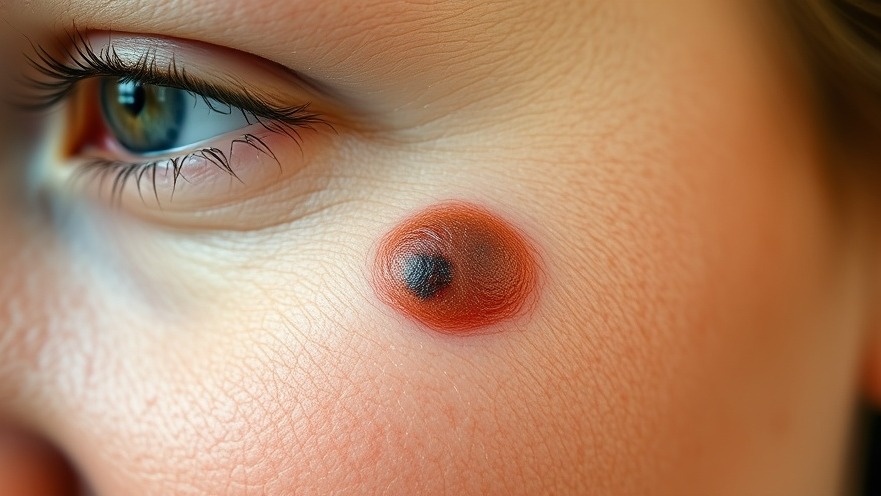
Understanding Skin Cancer: A Growing Concern for All
Skin cancer is not confined to a particular demographic; it affects individuals regardless of age, race, or skin type. Alarmingly, one in five Americans will be diagnosed with skin cancer at some point in their lives. This rising statistic underscores why healthcare providers, particularly those in concierge medical practices, should prioritize skin health awareness among patients. Effective communication about the risks and signs of skin cancer can foster a strong patient relationship and enhance overall care.
Common Skin Cancer Types: What to Watch For
Among the various forms of skin cancer, basal cell carcinoma and squamous cell carcinoma (often referred to as non-melanoma skin cancers) are the most prevalent. These cancers occur in the upper layers of skin—most often in areas exposed to sunlight, including the face, ears, and neck. The lesions can appear deceptively harmless; basal cell carcinoma typically manifests as a pearly bump, while squamous cell carcinoma looks like a rough, scaly patch. Although they grow slowly, neglecting treatment can lead to significant disfigurement.
Moreover, melanoma, the most dangerous type of skin cancer, claims nearly 20 lives daily in the U.S. It can arise from existing moles or may appear suddenly on healthy skin. Early detection is critical, as melanoma frequently spreads to other body parts, heightening the need for vigilance when examining skin.
The ABCDEs of Melanoma: A Simple Guide to Early Detection
Healthcare providers can play a vital role in educating patients about the ABCDEs of melanoma, which serve as a guide for recognizing warning signs:
A for Asymmetry: One half of the mole doesn't match the other.
B for Border irregularity: The edges are ragged or blurred.
C for Color variation: The mole has different shades.
D for Diameter: Moles larger than 6mm are concerning.
E for Evolving: Any changing mole should be examined.
By teaching patients these characteristics, practitioners not only enhance awareness but also empower individuals to seek early care, resulting in better health outcomes.
Spotting Skin Cancer in Unlikely Areas
It’s essential for patients to understand that skin cancer can manifest in unexpected places—beyond the face and exposed areas. Surprising spots include under nails, in the mouth, and on the scalp. By actively encouraging self-examination in these less obvious areas, concierge medical practices can further help in early identification and prevention of severe conditions.
Actionable Insights for Practice Growth
To bolster the health of your patients and position your practice as a leader in preventive care, consider integrating skin cancer screenings and informational seminars into your offerings. Building a culture of wellness through proactive education can significantly enhance patient loyalty and satisfaction, giving your practice an edge in a competitive landscape.
As you implement these strategies, remember to communicate empathetically and clearly with your patients. This not only helps in demystifying potential health issues but also emphasizes your commitment to their overall well-being, fostering a lasting relationship that goes beyond mere medical treatment.
Call to Action: Take a Step Towards Empowering Your Patients
Start by introducing a skin cancer awareness workshop at your facility. Provide resources, share the ABCDEs of melanoma, and promote skin screenings. By doing so, you'll educate your patients, enhance their health, and strengthen your position as a trusted healthcare provider.
 Add Row
Add Row  Add
Add 




Write A Comment